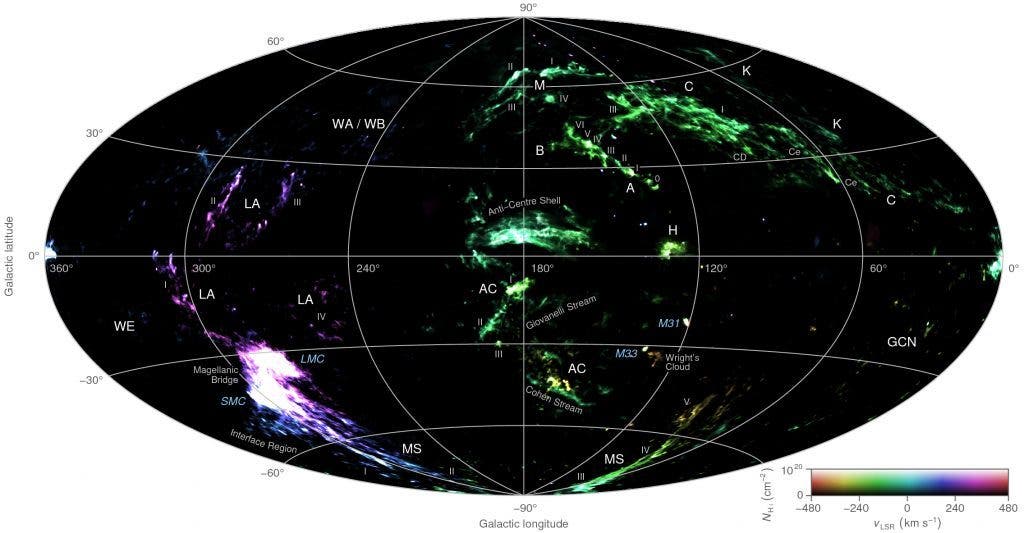Right outside the Milky Way plane, strange and enormous clouds of hydrogen zip through intergalactic space at incredible speeds. Scientists have known for some time that these mysterious objects exist but it’s only recently that they’ve been mapped in great detail.

An all-sky map showing the radial velocity of neutral hydrogen gas belonging to the high-velocity clouds of the Milky Way and two neighboring galaxies, the Large and Small Magellanic Clouds. Credit: ICRAR.
Everything about these clouds speaks to their grand scale. Some of the clouds are millions of times the mass of the sun and stretch over tens of thousands of light-years in diameter.
The hydrogen clouds cover about 13 percent of the night sky but it took the powerful radio telescopes employed by Australian scientists at the International Center for Radio Astronomy Research (ICRAR) to peer inside them. The new data enabled the researchers to construct a far more detailed map of the clouds that now shows never before seen features such as clumps and branch-like structures.
“It’s something that wasn’t really visible in the past, and it could provide new clues about the origin of these clouds and the physical conditions within them,” said Tobias Westmeier, one of ICRAR researchers involved in the new research, in a statement.

A false-color all-sky map combining the column density and radial velocity of high-velocity neutral hydrogen gas. Credit: ICRAR.
What makes these clouds particularly interesting, yet challenging, to study is the fact they move differently from the rotational movement of the galaxy itself. Traveling at break-neck speeds of 43.5 to 56 miles per second, the clouds also seem to be in a hurry to move towards or away from us.
It’s not clear at all at this point how the clouds got here or why they behave the way they do. It could be that the odd objects are leftovers from the formation of the galaxy itself. Alternatively, they could be sourced from some alien galaxy only to be caught in the Milky Way’s gravitational embrace. This latter hypothesis seems to carry more weight given the chemical composition of the hydrogen-rich clouds differs from what you’d typically expect to find within the Milky Way.
Maybe you, dear reader, can help to answer this question. The map is freely available online for anyone to study.
The new findings appeared in the Monthly Notices of the Royal Astronomical Society.









